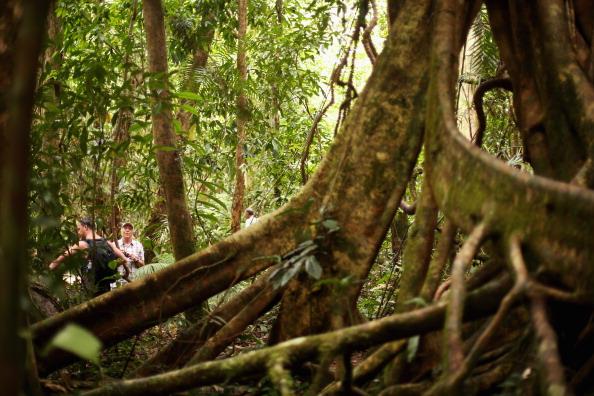The Australian Conservation Foundation (ACF) says banks should consider attaching “deforestation” conditions on loans in a proposal most likely to impact farmers.
The ACF claimed that over 200,000 hectares of koala-inhabited habitat in Queensland, Australia, were destroyed in the past 10 years and that over 364,000 hectares of native vegetation were cleared from 2018 to 2020—land allegedly classified as “deforestation” under global definitions.
The group further claimed that 50 percent of the land cleared was for just 267 properties (241 owners), namely farmers. Around 60 percent of these were linked to Australian banks via a mortgage or security.
The biggest lender was National Australia Bank, with the others being Rabobank, Commonwealth, ANZ, Suncorp, and Westpac.
“Banks should do due diligence before lending, set ‘no deforestation’ targets and attach relevant conditions to their loans to agribusinesses and property developers,” said ACF campaigner Nathaniel Pelle in a statement.
“While the UN says companies cannot claim to be on the path to net-zero while still funding deforestation, none of Australia’s big four banks have a ‘no deforestation’ target, raising doubts about the credibility of their net-zero commitments.”
In response, the Queensland Labor government said data from the Statewide Landcover and Trees Study (SLAT) that monitor the state’s woody vegetation revealed a 50 percent decline in land clearing between 2019 to 2020.
In 2018-19, around 195,000 hectares of woody vegetation, which includes remnant and regrowth vegetation, was cleared. This dropped to 96,400 in 2019-20.
For remnant vegetation, this number went from 184,800 hectares to 87,300 in 2019-20.
“The Queensland government’s responsible vegetation management laws protect our environment and habitats and allow landholders to manage the operations that underpin our agricultural sector,” said a spokesperson in a statement to The Epoch Times.
“The terms and conditions under which banks and other financiers enter into mortgages and loans are commercial matters between the parties.”
ACF Misses the Mark on a Number of Fronts: Former Premier
Meanwhile, former state premier, Campbell Newman, said Queensland already had some of the toughest land-clearing laws in the country.“That’s either an achievement of the Palaszczuk government, or it’s overstepping the mark,” he told The Epoch Times. “For farmers, it’s very difficult for them to actually clear land.”
At the same time, banks were unlikely to engage in any illegal activity.
“To have a go at banks or farmers in this way is outrageous,” Newman said.
Global Deforestation Push Underway
The ACF’s proposal follows a 2021 agreement from 100 world leaders to commit to reversing land degradation and deforestation as part of the wider push towards net zero globally.The Glasgow Leaders’ Declaration on Forests and Land Use, at the COP26 climate summit, pledged $12 billion from 12 countries between 2021 to 2025 to support governments in tackling wildfires, restoring degraded land, and advancing the rights of Indigenous communities.
The land covered by the agreement includes vast expanses of forest in Canada, Russia and rainforest in Brazil, Colombia, Indonesia, and the Democratic Republic of Congo.
“Indonesia is blessed as the most carbon-rich country in the world on vast rainforests, mangroves, oceans, and peatlands. We are committed to protecting these critical carbon sinks and our natural capital for future generations,” said Indonesia’s President Joko Widodo.
Yet eco-modernist, Michael Shellenberger, has argued against the narrative that the planet’s environmental situation is in dire straits.
“Somewhere between 305,100 people die every year from natural disasters. More people die walking from their bed to the toilet than they do from natural disasters.”
He also said there was more coral in the Great Barrier Reef than there had ever been in 36 years.
At the same time, forest fires have claimed 25 percent less land compared to 2003—an area the size of Texas.
“If you want to worry about environmental problems, then you should worry about the overconsumption of fish. That’s one of the environmental problems that doesn’t get enough attention,” he later told The Epoch Times.





